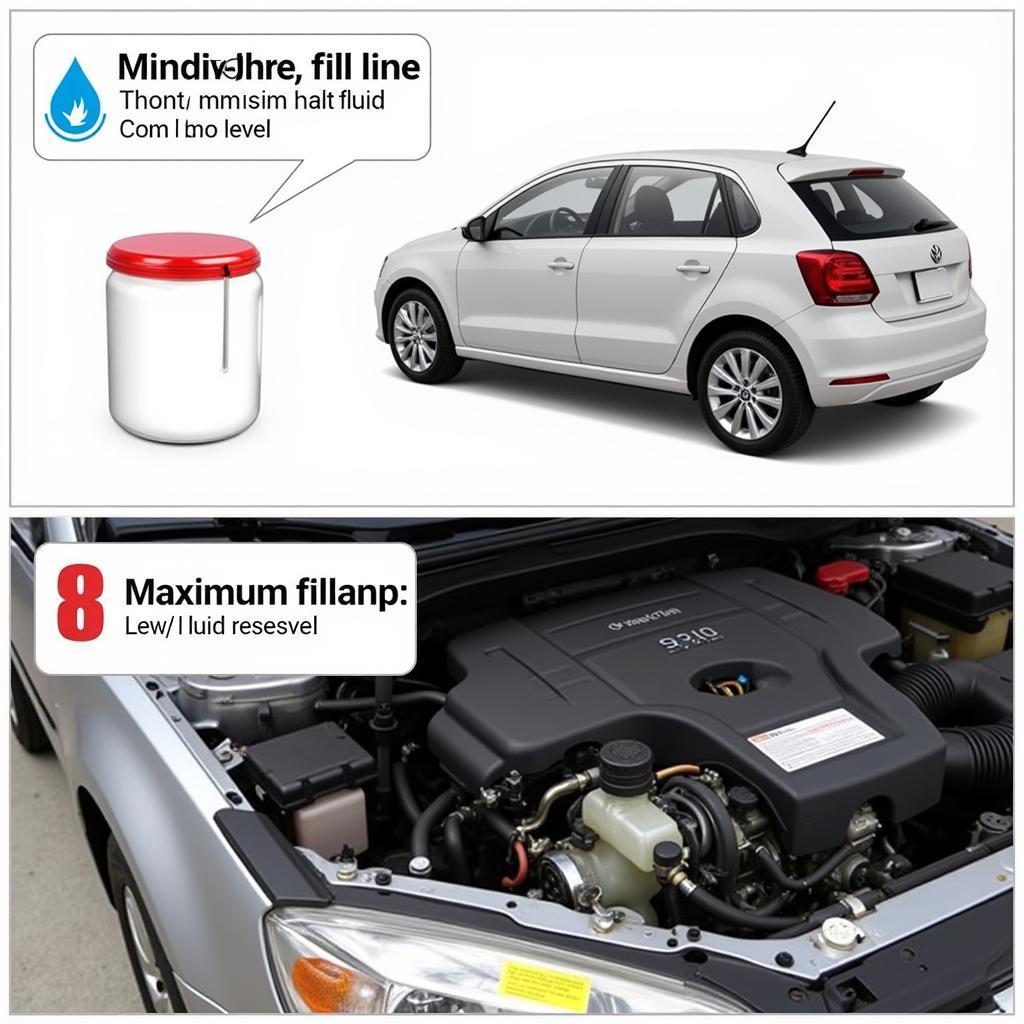That ominous glow on your dashboard – the seat steering wheel warning light – can be unsettling. It signals a potential issue with your car’s power steering system, impacting drivability and safety. This guide will delve into the common causes of this warning light, diagnostic procedures, and potential solutions, empowering you to address the problem effectively.
The seat steering wheel warning light, typically depicted as a steering wheel with an exclamation mark, indicates a malfunction within the power steering system. This could range from low power steering fluid to more complex electronic issues. Ignoring this warning could lead to further damage and compromise your safety on the road. You can find more information about specific Seat Ibiza models by checking out this resource on the Seat Ibiza steering wheel warning light.
Understanding Your Car’s Power Steering System
Your car’s power steering system assists you in turning the steering wheel with ease, especially at lower speeds. It utilizes hydraulic or electric power to reduce the effort required for steering. When the system detects a problem, the warning light illuminates, alerting you to potential issues.
Common Causes of the Seat Steering Wheel Warning Light
Several factors can trigger the seat steering wheel warning light. These include:
- Low Power Steering Fluid: Insufficient fluid levels can hinder the system’s performance and trigger the warning light.
- Power Steering Fluid Leak: Leaks can lead to low fluid levels and compromise the system’s functionality.
- Faulty Power Steering Pump: The pump is responsible for circulating the fluid; a malfunctioning pump can disrupt the system.
- Damaged Steering Rack: The steering rack translates the steering wheel’s rotation into wheel movement. Damage to this component can cause steering issues.
- Electrical Problems: Issues with the wiring, sensors, or the electronic control unit (ECU) can also trigger the warning light.
 Seat Steering Wheel Warning Light – Low Fluid
Seat Steering Wheel Warning Light – Low Fluid
Diagnosing the Problem
Diagnosing the cause of the seat steering wheel warning light requires a systematic approach. Start by checking the power steering fluid level. If it’s low, top it off and observe if the warning light disappears. If the light persists or the fluid level drops again quickly, it indicates a leak. Inspect the power steering hoses, pump, and rack for any visible leaks. For more complex electrical issues, it’s best to consult a qualified technician. You might find this resource on warning signs for brake problems helpful if you suspect related issues.
Addressing the Issue
Depending on the cause, the solution to the seat steering wheel warning light can range from simple DIY fixes to more complex repairs.
- Low Fluid: Topping off the fluid might resolve the issue.
- Leak: Repairing or replacing leaking hoses, seals, or the power steering rack.
- Faulty Pump: Replacing the power steering pump.
- Electrical Issues: Repairing or replacing damaged wiring, sensors, or the ECU.
“Regularly checking your power steering fluid level can prevent many issues,” says John Smith, Automotive Service Manager at Expert Auto Repair. “It’s a simple check that can save you from costly repairs down the line.” Remember, ignoring the warning light can exacerbate the problem and lead to more extensive damage. Learn more about Seat Ibiza warning lights on the steering wheel to be prepared for different scenarios.
Remote Diagnostics and Software Solutions
Modern vehicles often rely on software and electronic systems for power steering control. Remote diagnostics and software updates can often address specific problems without requiring physical intervention. Companies specializing in remote car diagnostics can access your vehicle’s data through the onboard diagnostic port (OBD-II) and identify the root cause of the warning light. This allows for targeted software updates or reprogramming to resolve software-related issues. This can be a convenient and efficient way to address certain power steering problems. Sometimes, even seemingly unrelated warnings, like a Tesla Model 3 seat belt warning, can stem from underlying software glitches.
Conclusion
The seat steering wheel warning light shouldn’t be ignored. Addressing the issue promptly can prevent further damage and ensure your safety on the road. By understanding the potential causes, diagnostic procedures, and solutions outlined in this guide, you can take the necessary steps to resolve the problem and keep your car running smoothly. If you are driving a Seat Ibiza, you can find specific information on this helpful page regarding the steering wheel warning light in Seat Ibiza.
FAQ
- What does the seat steering wheel warning light look like? It typically appears as a steering wheel icon with an exclamation mark.
- Can I drive with the seat steering wheel warning light on? It’s advisable to avoid driving and have the issue diagnosed as soon as possible.
- How much does it cost to fix a power steering problem? The cost varies depending on the cause and the required repairs.
- How often should I check my power steering fluid? It’s recommended to check it regularly, especially during routine maintenance checks.
- Can I top off the power steering fluid myself? Yes, it’s usually a simple DIY task, but ensure you use the correct fluid type.
- What if the warning light stays on after topping off the fluid? This indicates a more serious issue that requires professional diagnosis.
- Can remote diagnostics fix the seat steering wheel warning light? In some cases, remote diagnostics and software updates can resolve software-related power steering issues.
